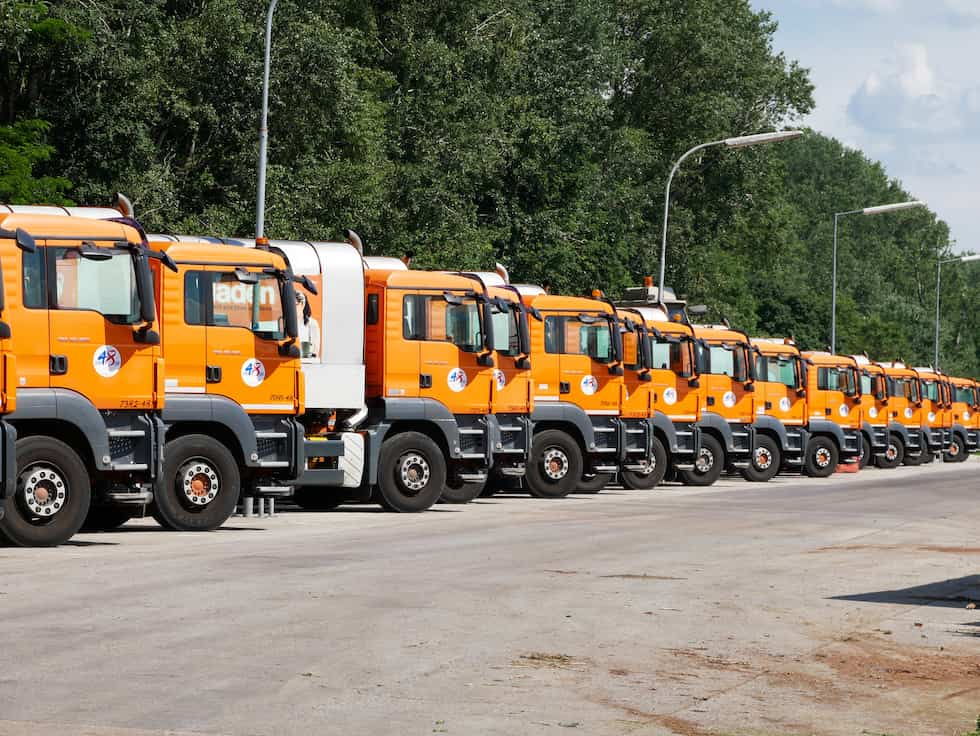Blog
The Benefits of Electrifying City Fleets
by SmartCity Team • June 29, 2021

NOTE: At the time this article was originally published, RUBICONSmartCity was not part of Routeware’s suite of technology solutions. RUBICONSmartCity was acquired by Routeware in August 2024 and has since been fully integrated into the company’s offering.
Of the 250 million vehicles on America’s roads today, less than one percent are electric, according to a recent study by The New York Times.
With vehicle manufacturers looking to make electric vehicles a quarter of all new automobile sales by 2035, the benefits of electrifying city fleets fall heavily on cities that are willing to make the leap to electric sooner, rather than later.
The Federal government is aggressively leading on plans to electrify the country. From the commitment to replace the entire federal fleet of 645,000 cars, trucks and SUVs with electric vehicles, to a push to advance electric vehicle charging infrastructure across the United States to make driving an electric vehicle convenient in every part of the country—not just in California, New York, and a handful of other states—the time to electrify city fleet vehicles is now.
Today, Rubicon® announced that the company is partnering with XL Fleet to deliver an Electrification-as-a-Service offering to Rubicon’s expansive network of hauler partners. XL Fleet is the leader in fleet electrification solutions for Class 2-6 commercial and municipal vehicles, with plans to expand its product offering into heavy duty applications including waste management.
With this partnership in mind, I want to briefly touch on the three core benefits of a city electrifying its fleet from the point of view of local communities, city governments, and the environment at large.
Local Communities
Multiple studies have shown that people—and in particular children—that live in dense city environments are more likely to suffer from an array of illnesses including asthma, bronchiolitis, and even cancer, due to the toxins that come through their windows from gas-powered vehicles on the street below.
This effect is especially pronounced for children and adolescents living above areas of heavy congestion whereby cars and other vehicles sit in traffic while their exhausts gush out fumes for much of the day. Air pollution caused 4.2 million premature deaths in 2016, according to the United Nations.
Electric vehicles eliminate this problem locally, and when city fleets choose to go the electrification route, they are providing a public health good to the city’s most vulnerable communities.
City Governments
Moving city fleet vehicles from gas-powered to electric will immediately help your city make headway in terms of meeting your sustainability and environmental, social, and governance (ESG) goals—and it sets a precedent for key employers in your locality as well as residents.
Take Houston, Texas as an example. As part of the City’s broader sustainability goals, Houston plans to convert an estimated 8,000 City of Houston non-emergency, light-duty municipal fleet vehicles to electric equivalents by 2030. Or Washington, D.C., where The Circulator, a public transportation bus system that provides almost five million trips a year, already supports a fleet of 14 fully electric vehicles, one of the largest on the East Coast.
Electrifying your city fleet is a win for operational efficiency, long-term cost savings, and the environment. In a similar fashion, Rubicon’s award-winning smart city technology platform, RUBICONSmartCity™, enables city governments to run faster, smarter, and more effective waste, recycling, and municipal fleet operations.
Given the inherent cost efficiencies and environmental benefits, an electrification initiative is a logical evolution of Rubicon’s comprehensive service offering.
The Environment
The Environment Protection Agency (EPA) estimates that a typical passenger vehicle emits about 4.6 metric tons of carbon dioxide per year. This number varies depending on a number of factors, including the type of fuel being burned, the fuel efficiency of the vehicle, and the number of miles driven.
While more electric vehicles than ever are being charged using solar power, providing a true zero-emissions ride, it’s true that a majority of electricity generation comes from burning fossil fuels. With this said, electric vehicles are more efficient than those running on traditional gas-powered internal combustion engines. In an article that dug into the efficiency of electric vehicles, The New York Times put it this way:
“An all-electric Chevrolet Bolt, for instance, can be expected to produce 189 grams of carbon dioxide for every mile driven over its lifetime, on average. By contrast, a new gasoline-fueled Toyota Camry is estimated to produce 385 grams of carbon dioxide per mile. A new Ford F-150 pickup truck, which is even less fuel-efficient, produces 636 grams of carbon dioxide per mile.”
When a city chooses to electrify its fleet, it is providing a big win not just for the local environment, but for its state, country, and the world as a whole.
To learn more about Rubicon’s partnership agreement with XL Fleet, click here. To learn more about RUBICONSmartCity, Get Started today with your initial quick and free consultation.